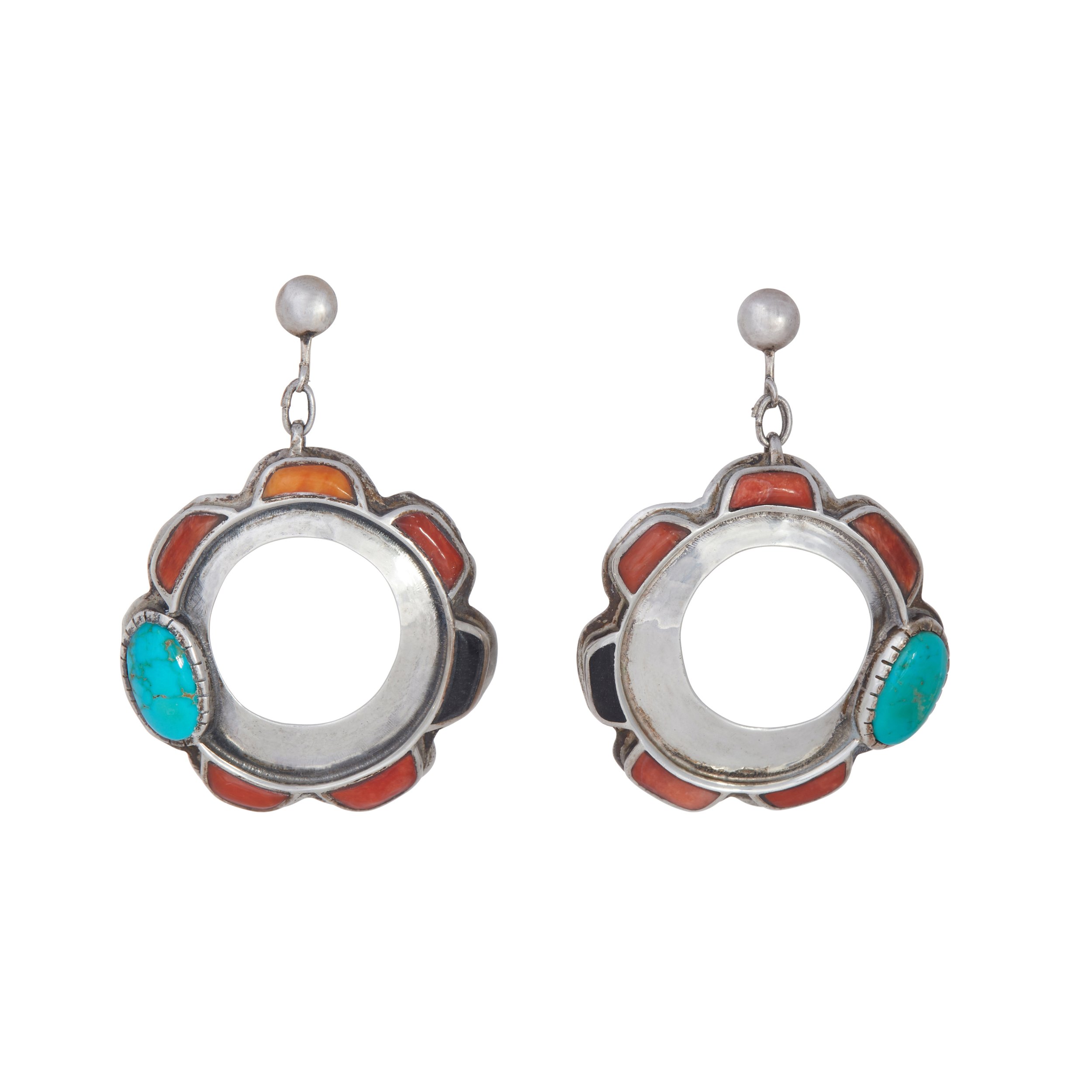EVELI SABATIE (b. 1940)
Eveli Sabatie, a French-North African jeweler, spent much of her adult life in the American Southwest. She was born in 1940 in eastern Algeria to parents of French and Spanish origin. Her childhood was spent mostly in Morocco.
Sabatie describes memories of inspiration from her early life: “The turquoise blues, the blue-greens, the lapis blues of tiles inlaid into the walls of the mosques and the fountains, the calls to prayer and the feast after the fast. The covered streets of the medina with streaks of light coming through and the play of shadows that ensued. The sound of anklets and bangles walking by. My love for bright colors, gauzy fabrics, and embroidered garments, my love for large jewels, for spices and drums—all of it is rooted in these primal impressions.”
She left North Africa as a teenager to study at the Sorbonne in Paris and never returned, eventually finding herself in San Francisco in the heyday of the Haight-Ashbury scene. A chance encounter in an elevator with some Hopi people led to an invitation to New Oraibi on the Hopi Reservation. She ended up living in Hopi from 1968 to 1972. Of this unique time in her life, she has said, “At the very instant I touched the Hopi soil and got a glimpse into its ceremonial life, my searching stopped: this was the authenticity of the human heart which I had been looking for.” Shortly after arriving at Hopi, she met Charles Loloma, who offered to teach her how to make jewelry. This was the beginning of what Sabatie has termed the “creative explosion,” which spanned over twenty years from 1973 to 1997.
Loloma was already the most famous Hopi jeweler, and he convinced Eveli to move to the Hopi Nation to live and work with him. His teaching had a profound influence on her work. She apprenticed in the studio alongside Loloma’s niece Verma Nequatewa, and soon began to make jewelry with her own distinct perspective and style. Her work had a huge influence on Loloma as well because of the materials she used and her unique sense of design. She became a famous artist in her own right after leaving Hopi, showing all over the Southwest and being the subject of a solo exhibition at the Wheelwright Museum in Santa Fe, New Mexico.
Speaking of her jewelry education, she says, “My teacher, Loloma, had the talent and skills to unlock my creativity and help me deliver all the treasures I had amassed on this already long journey. In his presence and in the midst of Hopi songs and dances, a door was swung open through which thousands of pieces were about to gush out.”
Sabatie stopped making jewelry in 1998, largely due to physical constraints. A yoga practitioner since the 1970s, she began teaching yoga in 1995 and lives in Arizona.
To learn more about Sabati, visit our Native American Collection page to see jewelry from our inventory of exquisite Native American jewelry and purchase the catalog Material Beauty: Modern Hopi, Navajo, and Pueblo Artist Jewelers, which accompanied our 2018 exhibition here.







